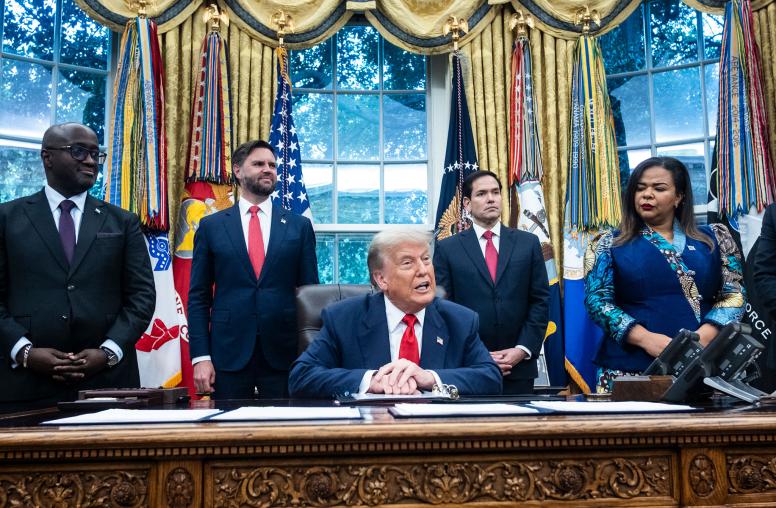Around the world, some countries suffer recurring bad fortune such as repeated famines, violence, and instability. For instance, Somalia has suffered multiple famines in the last decade, exacerbated by recurring terrorist attacks from al-Shabaab and a weak government that struggles to provide access to schools and health services. Elsewhere, Pakistan has been victim to numerous earthquakes that kill thousands in addition to persistent skirmishes with India, terrorist attacks and tensions with the United States over terrorist safe havens.

The recurrence of crises in places like Somalia and Pakistan is not, of course, an accident of chance or bad luck. Broken relationships between society and governments create the conditions for repeated cycles of violence and extremism, as well as vulnerability to natural disasters. In fragile states, disrupting those cycles requires ambitious action to remedy dysfunctional and fractured state-society relationships.
Coming to a Common Understanding on Addressing Fragility
As USIP's Nancy Lindborg and Joe Hewitt explore in a recent article, “In Defense of Ambition: Building Peaceful & Inclusive Societies in a World on Fire,” the international community largely agrees that fragility—the broken relationship between a government and its people—is the root of all violent conflict. Yet, two decades of evidence has not galvanized U.S. policy to favor prevention over crisis response.
One of the key hurdles to an effective government response, argue Lindborg and Hewitt, is that too few policymakers accept that addressing fragility ought to be a U.S. national security priority. Although fragile states are rarely a direct threat to homeland security, they can greatly impact U.S. national security interests:
“[T]he top seven states responsible for refugees and migrants rank at the top of nearly every index on fragility; five of the top seven most fragile states also represent the top five sources of terrorist attacks; the fifty most fragile states on earth are home to 43 percent of the world's most impoverished people, or roughly three billion people; and a majority of the unprecedented sixty-five million people currently displaced by violent conflict around the globe are fleeing the forty ongoing internal conflicts worldwide.”
If the U.S. is committed to leading a world that fights for prosperity and security, it must address the challenges posed by fragile states. However, Lindborg and Hewitt note that policymakers across the U.S. interagency have yet to arrive at a consensus about the challenge of fragility and a shared understanding of the nature of the problem. Researchers must strengthen the case for expanded engagement in fragile states with additional compelling evidence about the relatively modest costs of prevention versus the immense costs of crisis response.
Bureaucratic Hurdles Stymie Effective Policy
However, even with a commitment to act, the U.S. government must also overcome deep structural challenges. Efforts to efficiently prioritize resources in the administration, effectively allocate resources in Congress, and develop successful whole-of-government actions will be difficult to enact when defense, diplomatic, and development agencies currently operate in stovepiped bureaucracies.
This is not a matter of luck but of evidence, understanding, and effective action. Once policymakers and practitioners better understand what works in fragile states and create more effective programming, U.S. actions will produce stronger results. Important changes in the development sector demonstrate an encouraging shift to a greater focus on fragility: Fragile states have self-identified for the first time in the New Deal for Engagement in Fragile States; the U.N.’s 2015 Sustainable Development Goals prioritize inclusivity and accountability; and the 2016 World Humanitarian Summit led to a rethinking of humanitarian architecture to address bureaucratic challenges and understand the underlying drivers of violent conflict. Tackling fragility presents steep challenges, but this recent progress and the urgent need to alleviate human suffering tell us the time is right for greater ambition.
Join us for “Ending Civil Wars” to grapple with these challenges and others integral to fragile states with contributors to the American Academy of Arts and Sciences’ project on Civil Wars, Violence, and International Reponses on April 13 at the U.S. Institute of Peace.



